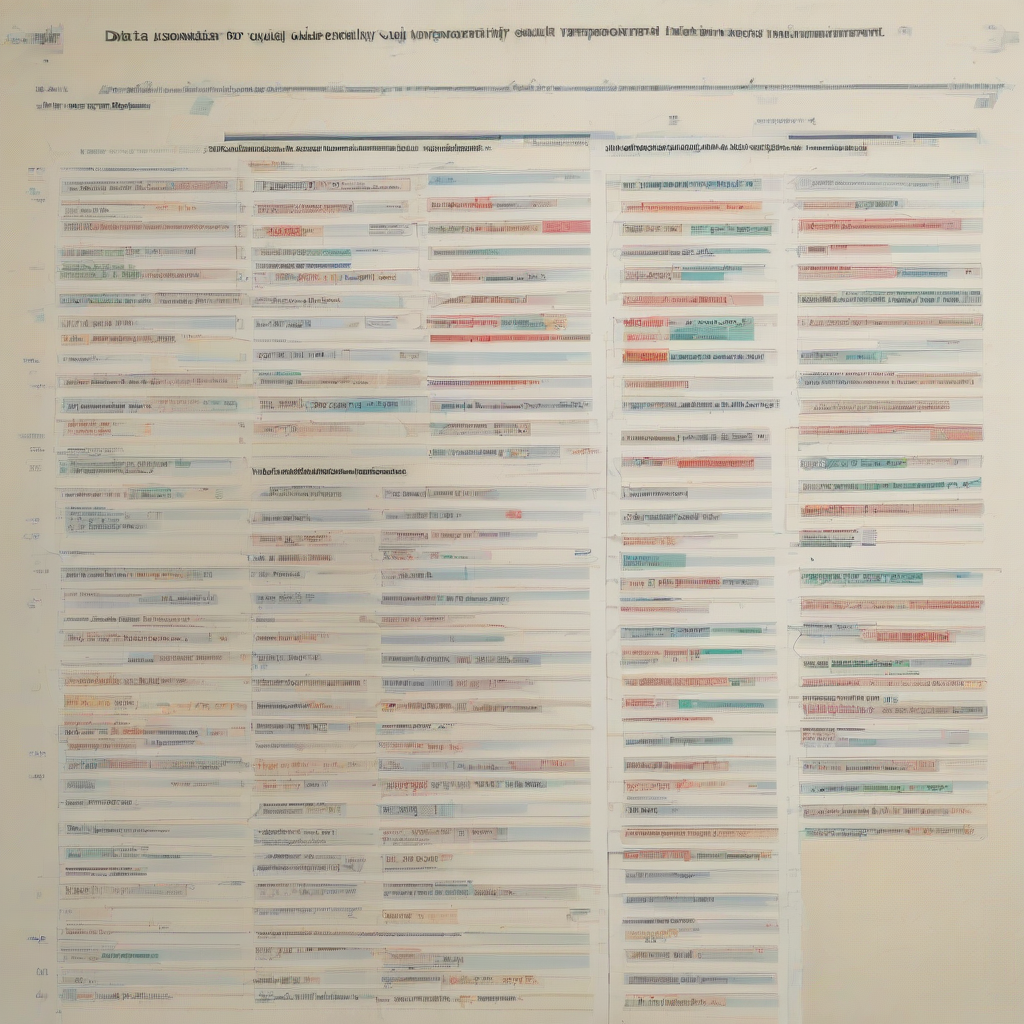Data Analysis for Quality Improvement: A Comprehensive Guide

Data Analysis for Quality Improvement: A Comprehensive Guide
Introduction
In today's competitive landscape, organizations are constantly striving to enhance their products, services, and processes to meet the ever-evolving needs of their customers. Quality improvement is an integral part of this pursuit, and data analysis plays a pivotal role in driving this effort. This comprehensive guide explores the multifaceted aspects of data analysis for quality improvement, providing insights into its methodologies, applications, benefits, and best practices.
Understanding Data Analysis for Quality Improvement
Data analysis for quality improvement is the process of systematically collecting, cleaning, analyzing, and interpreting data to identify areas for improvement and optimize performance. It involves leveraging statistical techniques, data visualization tools, and analytical models to extract meaningful insights from data sets. The goal is to gain a deeper understanding of the factors that influence quality, identify root causes of defects, and implement evidence-based solutions to enhance overall quality.
Key Principles of Data Analysis for Quality Improvement
- Data-Driven Decision Making: Decisions regarding quality improvement should be based on objective data analysis rather than subjective opinions or assumptions.
- Focus on Customer Needs: Data analysis should be aligned with customer expectations and requirements to ensure that quality improvements address actual needs.
- Continuous Improvement: Quality improvement is an ongoing process that requires continuous monitoring and data analysis to identify new areas for improvement.
- Process Mapping and Analysis: Mapping and analyzing processes helps to identify potential bottlenecks, inefficiencies, and areas where quality can be enhanced.
- Statistical Process Control: Statistical process control tools help to monitor and control process variations, preventing defects and maintaining consistency.
- Root Cause Analysis: Identifying the root causes of defects is essential for implementing effective solutions that address the underlying issues.
Data Sources and Collection Methods
Collecting accurate and relevant data is crucial for effective data analysis. Common data sources for quality improvement include:
- Production Data: This includes data related to production processes, such as yield rates, defect rates, cycle times, and equipment downtime.
- Customer Feedback: Surveys, reviews, and complaints provide valuable insights into customer satisfaction and areas where quality needs improvement.
- Internal Audits: Regular audits can identify compliance issues, potential risks, and areas for improvement.
- Supplier Data: Information on supplier performance, defect rates, and delivery times can impact overall product quality.
- Market Data: Industry trends, competitor analysis, and customer behavior data provide context for quality improvement efforts.
Data Analysis Techniques
Various data analysis techniques are employed in quality improvement, each with its unique strengths and applications:
- Descriptive Statistics: Summarizing and visualizing data to identify trends, patterns, and outliers.
- Regression Analysis: Identifying relationships between variables to predict outcomes and understand the impact of process changes.
- Correlation Analysis: Measuring the strength of relationships between variables to identify potential causes and effects.
- Statistical Process Control (SPC): Monitoring and controlling process variations using control charts to identify and address deviations from desired performance.
- Root Cause Analysis (RCA): Identifying the root causes of defects using techniques like the "5 Whys" or fishbone diagram.
- Failure Mode and Effects Analysis (FMEA): Proactively identifying potential failure modes and their effects to mitigate risks and prevent defects.
- Design of Experiments (DOE): Conducting controlled experiments to determine the optimal settings for process parameters and product designs.
Benefits of Data Analysis for Quality Improvement
Data analysis brings significant benefits to quality improvement initiatives, including:
- Reduced Defects and Rework: Identifying root causes and implementing corrective actions leads to fewer defects and less rework, saving time and resources.
- Improved Customer Satisfaction: Enhanced product and service quality leads to higher customer satisfaction, loyalty, and positive word-of-mouth.
- Increased Efficiency and Productivity: Streamlining processes and eliminating inefficiencies improve overall efficiency and productivity.
- Lower Costs: Reducing defects, rework, and waste directly translates into lower costs and increased profitability.
- Enhanced Process Control: Monitoring and controlling process variations through data analysis ensures consistency and predictability in product quality.
- Evidence-Based Decision Making: Data analysis provides objective evidence to support quality improvement decisions, reducing subjectivity and bias.
- Continuous Improvement Culture: Data analysis fosters a culture of continuous improvement by promoting data-driven decision making and a focus on process optimization.
Best Practices for Data Analysis in Quality Improvement
- Define Clear Objectives: Clearly define the goals and objectives of the data analysis project to ensure that the analysis is relevant and focused.
- Collect High-Quality Data: Ensure that the data collected is accurate, reliable, and relevant to the objectives of the analysis.
- Use Appropriate Analytical Techniques: Select the most appropriate data analysis techniques based on the nature of the data and the objectives of the analysis.
- Visualize Data Effectively: Use data visualization tools to present data in a clear and understandable manner, facilitating insights and decision-making.
- Communicate Findings Clearly: Communicate the results of the data analysis effectively to stakeholders, ensuring that they understand the key findings and recommendations.
- Implement Recommendations: Translate the insights from data analysis into actionable recommendations and implement them to improve quality.
- Monitor and Evaluate Results: Continuously monitor the impact of quality improvement efforts through ongoing data analysis and make adjustments as needed.
Conclusion
Data analysis is an indispensable tool for quality improvement, empowering organizations to make data-driven decisions and achieve sustainable enhancements in product quality, customer satisfaction, and overall performance. By embracing the principles and best practices outlined in this guide, organizations can effectively leverage data analysis to drive continuous improvement and achieve their quality goals.
What's Your Reaction?

















